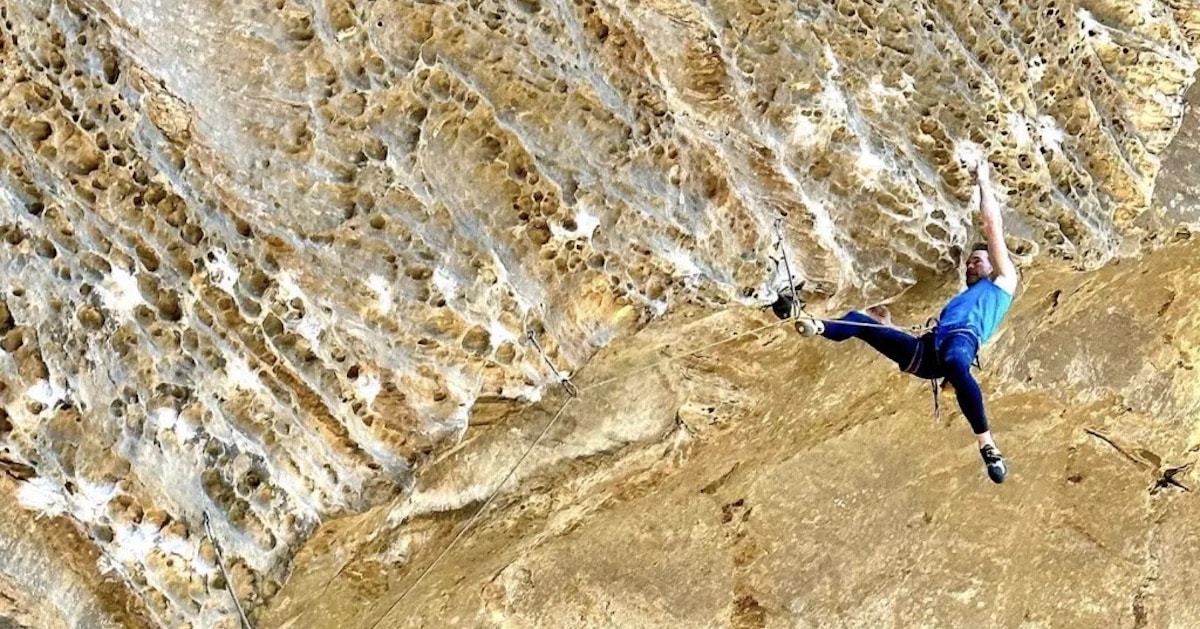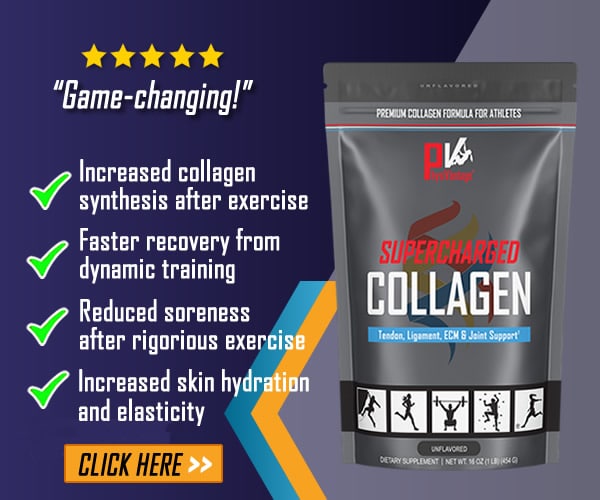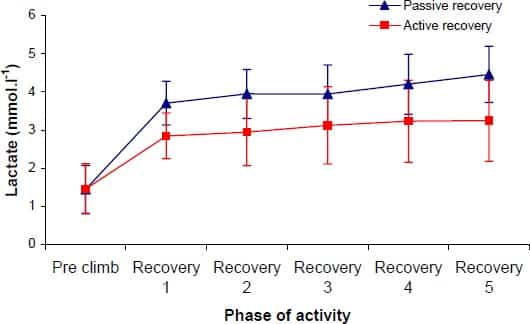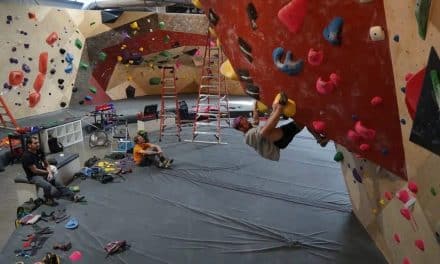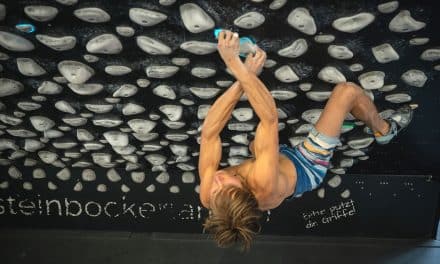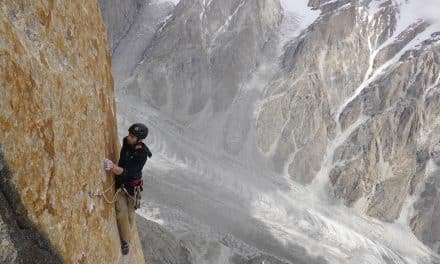Coach Eric Hörst, 59, made the most of a finger injury by letting go of expectations, changing up his training methods, and channeling his new strengths on Kaleidoscope, 13c.
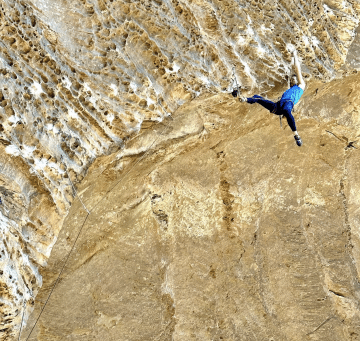
Coach Eric Hörst sending Kaleidoscope, 5.13c. (Photo: Marc Heilmann)
Last month, Coach Hörst added yet another worthy climb to his tick list: Kaleidoscope, 13c/8a+, in Kentucky’s Red River Gorge. He managed to send this stout route at a grade near his all-time limit after a mere five sessions and 13 total efforts—at age 59, no less. Not only that, Coach Hörst came into the spring season still nursing a lingering finger injury.
Osteoarthritis pain in his knuckle joint had kept him from engaging in much finger strength training over the winter, and left him in less-than-ideal shape to tackle his leftover project from the fall: Silky Smooth, a different 13c with a bouldery, crimp-dominant crux. Not exactly the introduction to the spring season that he needed!
Endurance Training
Rather than push through the pain and face sub-par performance, Coach Hörst pivoted. He set his sights on a different goal that spoke to his current strengths. The pain in his knuckle may have closed the door on max finger strength for the time being, but it led him in another direction that proved just as worthy. “I arrived at the Red with very high aerobic capacity,” Hörst notes. “I wasn’t able to do any intense finger training this winter, so I did what I could without provoking the joint: lots of aerobic threshold training!”
For Coach Hörst, this meant clocking countless hours on the Treadwall, performing stamina workouts and 30/30 intervals (sets of 30 seconds of high intensity effort followed by 30 seconds of rest). He bolstered his healing yet hardworking body with twice-daily doses of Sendure X to promote muscle circulation mixed with Supercharged Collagen for joint and tendon support, followed by Weapons-Grade Whey and MAG-ATP for optimal post-workout recovery. These sessions and supplements helped make up for any lack of brute strength with abundant amounts of endurance.
Breadth Over Depth
This wasn’t such a bad thing in Coach Hörst’s case. For most routes at the Red, that’s actually the perfect base to build from. Ever the optimist, he made the most of his situation and focused on climbing for volume to see how far his enhanced endurance could take him.
“I spent the first few weeks of the season trying to onsight and second-go as many routes in the 5.12b to 5.13a range as possible,” Hörst explains. “I knew it would be a good way to get back into the groove of efficient outdoor movement after a winter of pumping plastic indoors.”
Beyond that, though, his experiment with volume gave him the chance to explore a good number of new routes. Hörst did himself a favor by choosing breadth over depth in this case. “Climbing a high volume of terrain is the fastest way to learn new skills, improve economy of movement, and dial in your mental game,” he reminds us. “Conversely, climbing the same 50 or 100 feet of rock, over and over, day after day, will actually stunt your technical growth.” Getting too wrapped up in Silky Smooth when he didn’t have the appropriate fitness for that kind of route would have set him back as a climber.
Sending Kaleidoscope
One of those new routes would soon become his proudest send of the spring season. Kaleidoscope, a Red River Gorge classic at the grade, follows a stunning line up a gradually arcing arete. Pump meets finesse in this beast of a route that’s both physically and technically challenging. 45 feet of flowy 12b breaks at a mediocre rest and shifts abruptly into intricate moves on scoop-style holds before a bouldery crux at the second to last bolt. A few more pumpy moves to the chains force climbers to keep fighting until the bitter end.
Hörst’s emphasis on aerobic training over the winter made him a strong contender for success on Kaleidoscope. After a rough few first goes spent sussing out complex beta in the more intricate sections, progress came quickly. He found himself one-hanging the route by day four. Perfect conditions on day five, a sunny and cool Easter Sunday, inspired a send on his second go of the day. He clipped the chains with energy to spare.
“With only a couple really hard moves,” Hörst explains, “Kaleidoscope was more a test of finding the right beta for my body size, refining movement for optimal efficiency, and then executing in the moment.” It was exactly what he’d spent the winter preparing for—whether he knew it at the time or not.
Reality Check!
Starting out the year bogged down by an injury may not have been the ideal scenario for Coach Hörst. But he manifested a different (and equally impressive) version of success for himself by switching gears. The takeaway: orient your performance goals around the training season you had, not the one you wish you had. Don’t be afraid to pivot. The opportunity you hadn’t anticipated could turn out to be far more promising than the one you’d expected.
Related Articles:
- Aging is (Mostly) a State of Body — Staying Fit Into Your 40’s, 50’s, and Beyond!
- Projecting 101 — 6 Tips to Sending Your Project!
- Chunk Down Your Route for Faster Sending
- Fueling for Sending with Climbing Dietitian Amity Warme
- Anatomy of a Redpoint Project
Copyright © 2000–2023 Lucie Hanes & Eric J. Hörst | All Rights Reserved.

